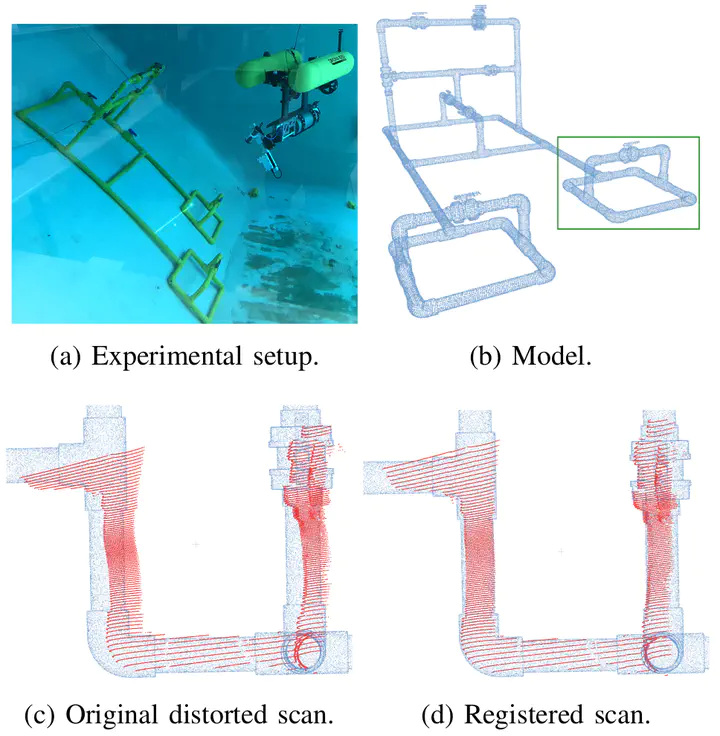
Abstract
Robots are usually equipped with 3D range sensors such as laser line scanners (LLSs) or lidars. These sensors acquire a full 3D scan in a line by line manner while the robot is in motion. All the lines can be referred to a common coordinate frame using data from inertial sensors. However, errors from noisy inertial measurements and inaccuracies in the extrinsic parameters between the scanner and the robot frame are also projected onto the shared frame. This causes a deformation in the final scan containing all the lines, which is known as motion distortion. Rigid point cloud registration with methods like ICP is therefore not well suited for such distorted scans. In this paper we present a non-rigid registration method that finds the optimal rigid transformation to be applied to each line in the scan in order to match an existing model. We fully leverage the continuous and relatively smooth robot motion with respect to the scanning time to formulate our method reducing the computational complexity while improving accuracy. We use synthetic and real data to benchmark our method against a state-of-the-art non-rigid registration method. Finally, the source code for the algorithm is made publicly available.